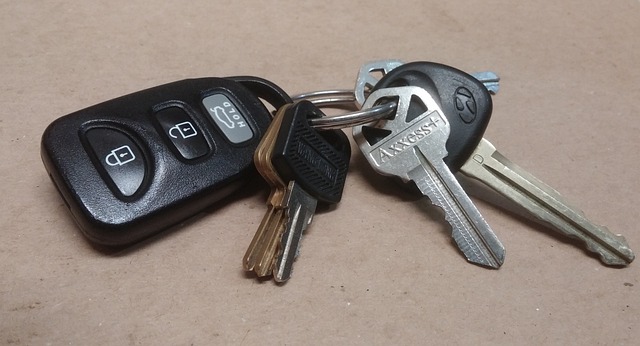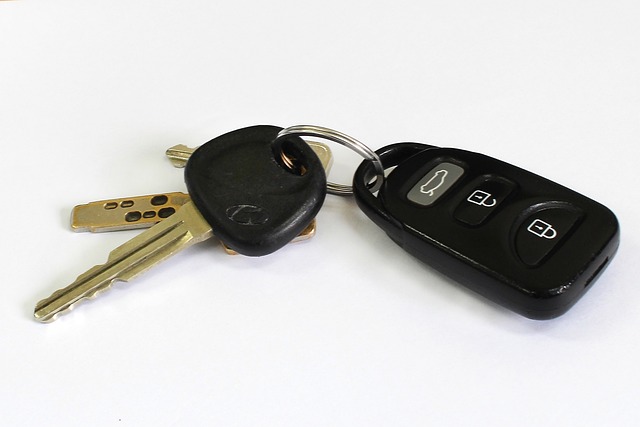When your key fob's responsiveness declines, it's likely due to a depleted battery, which can cause lockouts and compromise your vehicle's security. Watch for signs like intermittent button unresponsiveness, delayed or silent car alarms, difficulty with door and trunk mechanisms, and dim LED lights, even with new batteries. Environmental factors like extreme temperatures can accelerate battery wear. A weakened signal range or a change in the green light pattern upon unlocking are also indicators that your key fob battery needs replacing. Regularly replacing the CR2032 battery is crucial for maintaining the reliability of your car's security system and for easy access to your vehicle. The process to replace the battery at home is straightforward, involving basic tools, and can be done by following the vehicle manufacturer's guide or a professional technician's advice. By addressing this issue promptly, you can avoid greater inconveniences and potential repair costs if the key fob fails completely.
When the reliability of your car’s key fob wanes, discerning whether it’s time for a replacement or maintenance can be pivotal. This article demystifies the signs of a failing key fob and guides you through diagnosing and replacing its battery effectively. Whether you’re grappling with unresponsive buttons or erratic signals, learn how to identify these telltale indicators and follow our detailed steps to restore your key fob’s functionality. Master the art of maintaining your key fob’s efficiency with our comprehensive approach.
- Recognizing the Symptoms: Understanding When to Replace Battery in Key Fob
- Common Failures Indicating the Need for Key Fob Maintenance
- Diagnosing Key Fob Issues: A Step-by-Step Guide
- How to Replace Battery in Key Fob: A Step-By-Step Tutorial
Recognizing the Symptoms: Understanding When to Replace Battery in Key Fob

When your key fob’s performance starts to wane, recognizing the symptoms early can save you from lockout scenarios and ensure your car’s security remains intact. A critical sign that it’s time to replace the battery in your key fob is when the device fails to respond to buttons or its functions intermittently. This could manifest as a delay in activation of the car’s alarm system, problems with door unlocking, or difficulties with the trunk release. Dimming LED lights on the key fob, even when new batteries were recently installed, can also be an indicator that the battery is nearing the end of its life. Typically, manufacturers design key fobs with long-lasting batteries, but environmental factors such as extreme temperatures can drain power more rapidly. If you notice a weakened signal range or a change in the frequency of the green light flashes when unlocking your car, it’s advisable to check the battery level. To maintain the integrity of your car’s security system and ensure convenient access to your vehicle, replace the battery in your key fob as soon as these symptoms become apparent. It’s a preventive measure that can alleviate unnecessary stress and avoid more costly repairs if the key fob fails completely. Always refer to your vehicle’s manual for specific instructions on how to replace the battery in your particular model’s key fob, or consult a professional for assistance.
Common Failures Indicating the Need for Key Fob Maintenance

When your key fob, a device integral to the access and operation of modern vehicles, begins to show signs of wear, it’s often a precursor to more significant issues. Common failures that signal the need for maintenance or replacement of your key fob include inconsistent responsiveness, erratic button functions, or complete failure to communicate with your car. A notable issue that can lead to these symptoms is a depleted battery within the key fob. The battery is crucial for powering the electronic components, and its failure can manifest as reduced functionality or an inability to unlock or start your vehicle. If you notice that your key fob’s response time has become sluggish or that it requires multiple presses to activate a function that once responded with a single press, it may be time to replace the battery in your key fob. Regularly checking the battery level and replacing it as needed can prevent these frustrating disruptions and ensure the continued reliability of your key fob’s functions. Additionally, if the LED lights on your key fob are dim or nonresponsive, or if the key fob fails to engage with the car’s security system, these are clear indicators that a battery replacement is in order. Maintaining your key fob by keeping an eye on its battery status and addressing issues promptly can significantly enhance your vehicle’s security and convenience features.
Diagnosing Key Fob Issues: A Step-by-Step Guide

When your key fob begins to exhibit signs of failure, it’s crucial to address the issue promptly to maintain the functionality and security of your vehicle. If your key fob is unresponsive or the buttons are not working as intended, one of the first steps you should consider is checking the battery level. A depleted battery is a common cause of malfunction in key fobs, and replacing the battery in key fob can often resolve these issues. To diagnose this, press each button on your key fob to see if there’s any response from your car’s locking mechanism. If you hear a beep or witness a light blink, it may indicate that the battery is low but still functioning; if there’s no reaction, it’s likely time for a replacement.
Should you confirm a low battery, you can usually find the correct replacement battery at an auto parts store. Replacement batteries are commonly available and come with clear instructions for DIY installation. However, if your key fob is unresponsive without any signs of battery life, proceed to the next step. Verify that there’s no obstruction between the key fob and the car’s receiver, as this can interfere with the signal. Ensure the antenna on your key fob is clean and unobstructed. If the problem persists, it may be due to a more significant issue like a damaged circuit board or a worn-out transmitter. In such cases, a professional auto locksmith can diagnose the problem further and guide you on whether a repair or a complete replacement of your key fob is necessary. Remember to handle your key fob with care to avoid accidental water damage, which can further complicate the situation. By following these steps methodically, you can often resolve issues with your key fob, especially if it involves replacing the battery in key fob, thus maintaining the secure access to your vehicle.
How to Replace Battery in Key Fob: A Step-By-Step Tutorial

When your key fob’s battery dies, it can disrupt your daily routine, leaving you without access to your vehicle. Thankfully, replacing the battery in most key fobs is a task that can be performed at home with some basic tools and a new CR2032 battery, which is commonly used in these devices. Here’s a step-by-step tutorial on how to replace the battery in your key fob:
Begin by locating the key fob’s back casing where the battery is typically housed. This area might require a small screwdriver to unscrew and remove. Be gentle to avoid losing any tiny parts or causing damage. Once the casing is off, you’ll see the battery compartment. Carefully remove the old battery, taking note of the battery’s orientation and polarity, as they must be replaced correctly for the key fob to function properly.
With the new battery in hand, align it with the contacts inside the battery compartment, ensuring that the positive (+) and negative (-) sides match up with the corresponding symbols or marks on the circuit board. Gently insert the battery, and replace the back casing. If necessary, follow any specific instructions provided by the vehicle manufacturer for your particular key fob model. After reassembling the key fob, test it to ensure that all functionalities, such as locking and unlocking your car doors, are working correctly. If not, double-check the battery placement or refer to the user manual for troubleshooting steps. Replacing the battery in your key fob is a straightforward process that can save you time and money, avoiding unnecessary service appointments.
When faced with issues related to your key fob, discerning the signs of a failing device is crucial for maintaining the security and convenience of your vehicle. This article has provided a comprehensive guide on recognizing symptoms that suggest it may be time to replace battery in key fob, detailing common failures and offering a step-by-step tutorial for battery replacement. By understanding these indicators and following the provided maintenance and repair steps, you can effectively address and resolve key fob malfunctions. Remember to stay vigilant and act promptly when these signs manifest to ensure your key fob operates reliably. With the right knowledge and actions, you can keep your vehicle’s access system functioning optimally.
